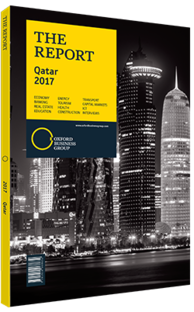Mergers and integration to streamline Qatar's energy sector
Recent times have seen the announcement of some major mergers in Qatar’s oil and gas industry, as hydrocarbons players respond to changing global conditions. The new, leaner sector should benefit from shared back office functions and more efficient practices, with the changes broadly welcomed across the industry.
Although 2018 will likely be marked by organisational realignments among the country’s most important revenue earners, these changes are being made at a time when the sector is experiencing a slowdown. The necessary calm for the mergers to be finalised is therefore evident, with the long-term benefits likely to make up for any short-term inconveniences.
Gas Mergers
In December 2016 Qatar Petroleum (QP) announced it was merging Qatargas and RasGas, its two liquefied natural gas (LNG) production units. The process, which began immediately, set a 12-month target for the conclusion of the merger, with the resultant entity to continue with the Qatargas name.
As the two organisations, which do identical work, are currently the world’s largest and second-largest LNG producers, the merged entity would dwarf its nearest rivals. In 2016 the two exported a combined 77.2m tonnes of LNG, or 29.9% of the global total, maintaining the country’s decade-long lead role in the market.
According to Saad Sherida Al Kaabi, president and CEO of QP, the merger will not affect Qatargas or Ras-Gas’ joint-venture production operations and existing staff and operations will continue in the merged entity, with no disruption of gas flow to customers. Qatargas works alongside ExxonMobil, Mitsui, Marubeni, ConocoPhillips, Shell, Idemitsu Kosan, Total Qatar and Cosmo Oil, while RasGas works with ExxonMobil.
Cost Cutting
The changes will affect the back office and marketing operations of both. Al Kaabi told media that merging the separate organisations responsible for managing production units and core business operations will save millions of dollars. This is particularly relevant at a time of low oil and gas prices. Regarding LNG, the increasing number of world suppliers, along with the growth of US shale gas, has had a deflationary effect, while LNG transportation costs, traditionally higher than piped gas or oil, have also had an impact. Qatar’s integrated LNG structure, in which Qatargas operates its own fleet of LNG tankers, has given it less flexibility in cutting these costs.
Consolidating the non-production elements of the business enables major cost cuts without affecting supply. To this end, QP assumed management of its foreign investment arm, QP International, at the beginning of 2015. This was followed in June 2016 by the announcement that QP’s international marketing arm, Tasweeq, would be integrated into its central business.
At the same time, QP has also been looking at ways to merge its downstream entities, eliminating duplication and cutting costs. In February 2017 the company announced the integration of Qatar Vinyl (QVC), part of Mesaieed Petrochemical, into the Qatar Petrochemical Company (QAPCO). The latter is 80% owned by Industries Qatar (IQ) and 20% owned by Total, with IQ serving as the holding company for QP’s interests in QAPCO and three other industrial businesses (see Industry chapter). QP owns 51% of IQ, while QAPCO and QP are both shareholders in QVC, along with Mesaieed Petrochemical, itself a QP Group company and 74.2% owned by QP. The merger, which began in March 2017, is expected to be completed by the end of 2017,
Looking Ahead
The question now is whether there are more mergers to come, as QP reshapes its still-size-able portfolio. Furthermore, QP is not the only major hydrocarbons entity in the region engaged in such activities. The Abu Dhabi National Oil Company is also combining its offshore production units, as well as a number of its service companies. It is expected that QP will continue to closely monitor operating costs in the short term, with the aim of trying to identify any possible synergies between different entities that could be leveraged to further streamline the company.
You have reached the limit of premium articles you can view for free.
Choose from the options below to purchase print or digital editions of our Reports. You can also purchase a website subscription giving you unlimited access to all of our Reports online for 12 months.
If you have already purchased this Report or have a website subscription, please login to continue.

